Conditioning roughout leather is an important step in maintaining the quality and durability of your leather products. Leather, especially roughout leather, can become dry and stiff over time due to exposure to environmental elements such as sunlight, heat, and moisture. Without proper conditioning, it may crack, fade in color and lose its softness.
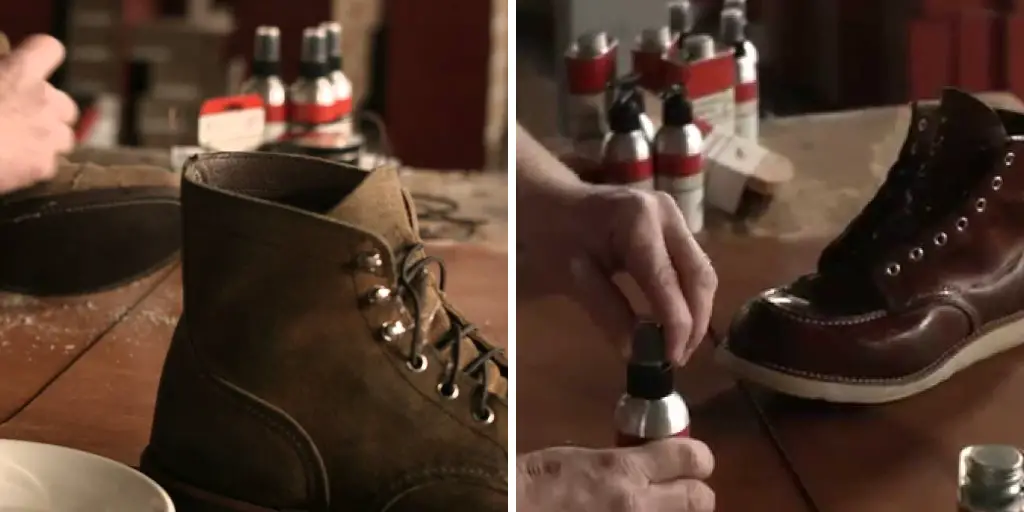
The main advantage of conditioning roughout leather is that it helps to maintain and prolong the life of the material. By keeping the leather soft and supple, it prevents cracking, stiffness, and other signs of wear and tear.
In addition to this, conditioning also helps to protect the leather from external elements such as water, dirt, and oil. Roughout leather tends to be more susceptible to these elements, so conditioning is essential in order to protect it and keep it looking its best. In this blog post, You will learn in detail how to condition roughout leather.
Step-by-step Instructions for How to Condition Roughout Leather
Step 1: Inspect the Leather
Before you start conditioning, inspect your leather for any dirt, debris, or stains. If there are any, clean them off using a soft brush or damp cloth. This will ensure that the conditioner penetrates evenly into the leather.
Step 2: Choose the Right Conditioner
There are many different types of leather conditioners available on the market. It is important to choose the right one for your roughout leather. Look for a conditioner that is specifically made for suede or nubuck leather.
Step 3: Test on a Small Area
Before applying the conditioner to the entire piece of leather, test it on a small inconspicuous area. This will ensure that the conditioner does not discolor or damage your leather. Using a soft cloth, apply the conditioner to the entire surface of the leather. Make sure to rub it in evenly and cover all areas of the roughout leather.
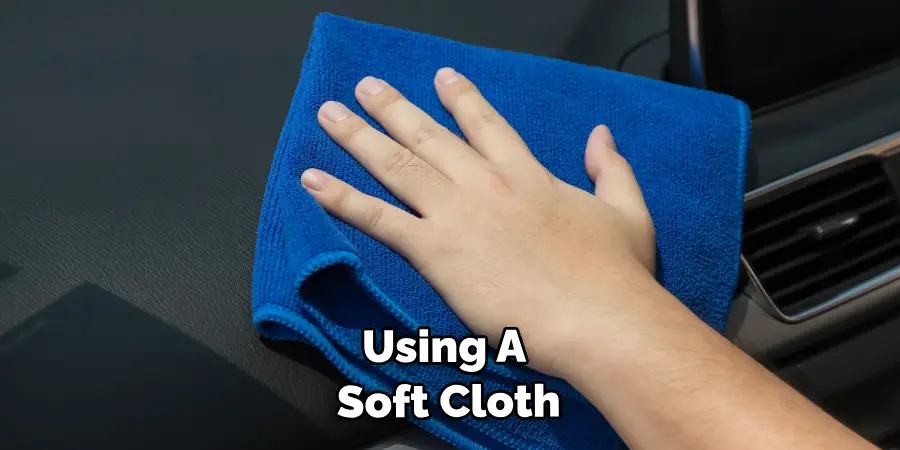
Step 4: Work in Small Sections
To ensure that you don’t miss any spots, work in small sections at a time. This will also help you control the amount of conditioner you use. After applying the conditioner, let it sit for a few minutes to allow it to penetrate into the leather. This will help soften and protect the leather fibers.
Step 5: Brush It Out
Using a soft brush, gently brush out any excess conditioner from the roughout leather. This will help to distribute the product evenly and remove any excess buildup. After brushing, let the leather dry completely before wearing or using it. This will ensure that the conditioner has fully absorbed into the leather and won’t transfer onto your clothing or skin.
Step 6: Repeat as Needed
If your roughout leather is particularly dry or damaged, you may need to repeat the conditioning process multiple times. Just make sure to let the leather fully dry before applying another coat. To maintain the softness and condition of your roughout leather, store it in a cool, dry place away from direct sunlight. This will help prevent it from drying out and becoming damaged over time.
By following these step-by-step instructions, you can effectively and safely condition your roughout leather to keep it looking and feeling its best. With proper care, your leather will last for years to come.
Safety Tips for How to Condition Roughout Leather
- Always test your conditioner on a small area before applying it to the entire piece of leather.
- Use a soft cloth and brush to apply and remove excess conditioner.
- Make sure to let the leather dry completely before wearing or using it.
- Avoid direct sunlight when storing your roughout leather, as it can cause fading or discoloration.
- Be careful not to use too much conditioner, as it can leave a greasy or sticky residue.
- Use caution when handling any cleaning products and always follow the instructions on the label.
- If your leather becomes overly dry or damaged, seek professional help instead of trying to fix it yourself.
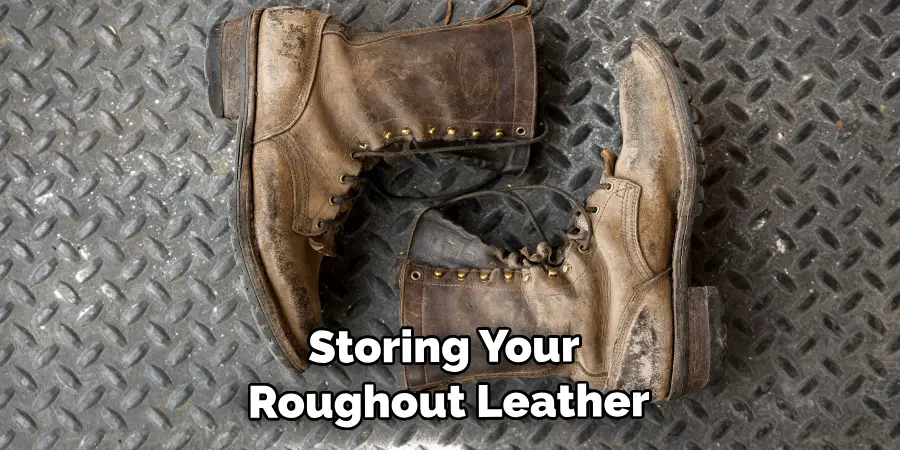
By following these safety tips, you can ensure that the conditioning process goes smoothly and without any damage to your roughout leather. Remember to always be cautious and gentle when caring for your leather goods.
How Often Should You Condition Your Roughout Leather?
The frequency of conditioning depends on several factors such as the type of leather, how often the item is used, and environmental conditions. For example, if you have a roughout leather jacket that you wear frequently in harsh weather conditions, it may require conditioning more often compared to a pair of roughout leather shoes that are only worn occasionally.
Additionally, the type of leather also plays a role. Full-grain roughout leather is generally more durable and requires less frequent conditioning compared to top-grain or split-grain roughout leather.
It is also important to consider the type of conditioner you are using. Some conditioners need to be applied more often, while others have a longer lasting effect. A good rule of thumb is to condition your roughout leather whenever it starts to look dry or feels stiff to the touch. This could be anywhere from every few months to once a year. However, it is always best to refer to the manufacturer’s instructions for specific guidelines on conditioning your roughout leather products.
What Are Some Tips for Maintaining the Softness and Suppleness of Roughout Leather?
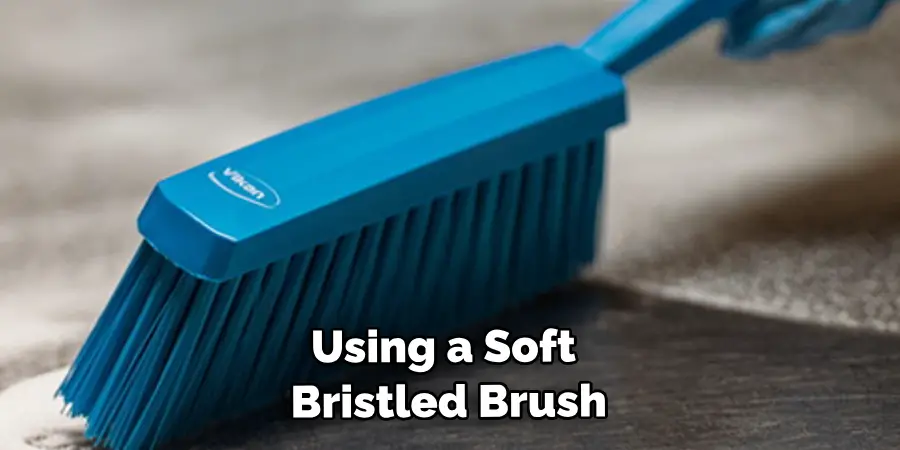
- Regularly brush off any dirt or debris from the surface of your roughout leather using a soft-bristled brush. This will help prevent the buildup of grime and oils that can cause the leather to lose its softness.
- Avoid getting your roughout leather wet, as this can cause it to stiffen and become stiff. If your leather does get wet, let it air dry naturally and avoid using heat sources like hairdryers or heaters. Additionally, make sure to condition the leather once it is completely dry.
- Store your roughout leather in a cool, dry place away from direct sunlight. Exposure to sunlight can cause the leather to fade and become brittle over time.
- Use a specialized suede brush to gently remove any scuffs or marks from your roughout leather. Avoid using harsh chemicals or cleaners, as they can damage the delicate fibers of the leather.
- If your roughout leather becomes stained, gently dab at the stain with a damp cloth and let it air dry. Do not rub vigorously as this can cause discoloration and damage to the leather.
- Invest in a good quality leather conditioner and apply it regularly to your roughout leather. This will help keep the leather soft and supple, as well as protect it from wear and tear.
- When not in use, stuff your roughout leather with acid-free tissue paper or a clean cloth to help maintain its shape and prevent creases.
- Finally, be gentle with your roughout leather and avoid harsh handling or excessive wear. The more care you take, the longer your leather will maintain its softness and suppleness.
- To further enhance the appearance of your roughout leather, consider using a waterproofing spray to protect it from water damage and stains.
- Remember to always test any products on a small, inconspicuous area of the leather before applying it to the entire surface. This will help prevent any potential damage or discoloration.
- With proper care and maintenance, your roughout leather can last for many years while still retaining its softness and suppleness. Enjoy the unique texture and character of this type of leather by following these simple tips.
To maintain the softness and suppleness of your roughout leather, it is important to remember that prevention is key. Regularly cleaning and conditioning the leather, avoiding harsh chemicals and handling, and protecting it from extreme weather conditions can greatly extend its lifespan.
What Are Some Common Mistakes to Avoid When Conditioning Roughout Leather?
When it comes to conditioning roughout leather, there are a few common mistakes that people tend to make. Avoiding these mistakes will help ensure that your roughout leather stays in good condition for a long time.
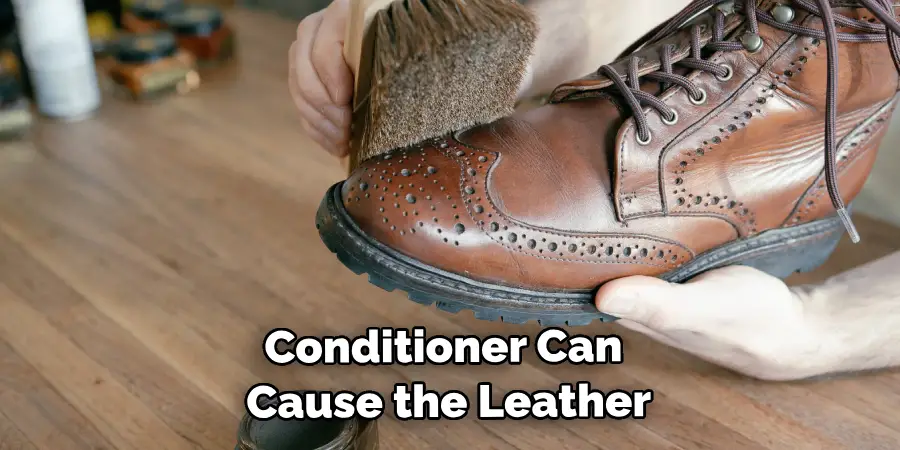
One of the most common mistakes is using too much oil or conditioner. Roughout leather is made from the flesh side of the hide, and applying too much oil or conditioner can cause the leather to become excessively greasy and heavy. This can also result in a build-up of residue on the surface, which can attract dirt and other debris over time.
Another mistake is using the wrong type of oil or conditioner. It’s important to use a product specifically designed for roughout leather, as regular leather conditioners may not be suitable for this type of leather. Using the wrong product can cause discoloration or damage to the leather.
Another mistake to avoid is over-conditioning. While it’s important to keep roughout leather moisturized, using too much conditioner can cause the leather to become overly soft and lose its natural texture and character. This can also make the leather more prone to damage and wear over time.
What is the Best Method for Conditioning Suede Side of Roughout Leather?
When conditioning the suede side of roughout leather, it’s important to choose a method that will effectively moisturize and protect the leather without causing any damage. One of the best methods for conditioning suede is using a spray-on conditioner specifically designed for roughout leather. This type of product allows you to evenly distribute the conditioner over the entire surface without saturating the leather.
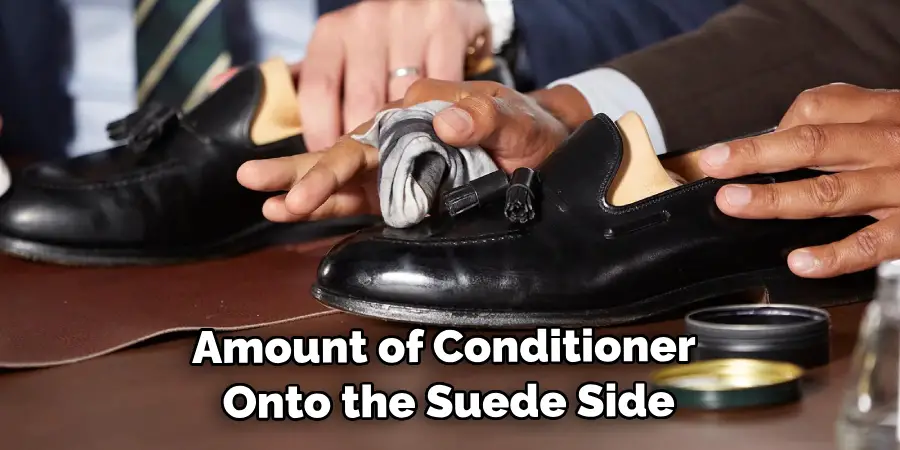
Another option is using a brush to apply a small amount of conditioner onto the suede side. This method allows for more control over the amount of conditioner applied and allows you to work it into any areas that may need extra attention. However, be sure to use a soft-bristled brush to avoid scratching or damaging the suede.
Lastly, you can also use a cloth to gently massage the conditioner into the suede side. This method may take a bit more time and effort, but it allows for thorough coverage and penetration of the conditioner into the leather fibers. Whichever method you choose, be sure to follow the instructions on the product label and avoid over-conditioning.
Are There Any Specific Products That Should Be Used on Roughout Leather?
There are a few specific products that are recommended for use on roughout leather. These include:
- Suede Brush: A suede brush is an essential tool for maintaining roughout leather. It helps to remove dirt and debris from the surface of the leather without damaging or altering its appearance.
- Leather Cleaner: It is important to use a specialized leather cleaner designed specifically for roughout leather. This will help to remove any stubborn stains or marks without causing damage to the delicate suede fibers.
- Leather Conditioner: Roughout leather needs to be conditioned regularly in order to maintain its softness and prevent it from drying out. A good quality leather conditioner designed specifically for suede and roughout leather is recommended.
- Water Repellent Spray: Since roughout leather is more prone to damage from water and stains, it is recommended to use a water repellent spray for added protection. Be sure to choose a product that is specifically designed for suede or roughout leather.
- Nubuck Block: A nubuck block can be used to gently rub away any scuff marks or minor scratches on roughout leather. This tool is especially useful for restoring the nap of the leather and keeping it looking new.
- Soft Cloth: When cleaning or conditioning roughout leather, it is important to use a soft cloth that will not scratch or damage the delicate surface. Microfiber cloths are recommended for this purpose.
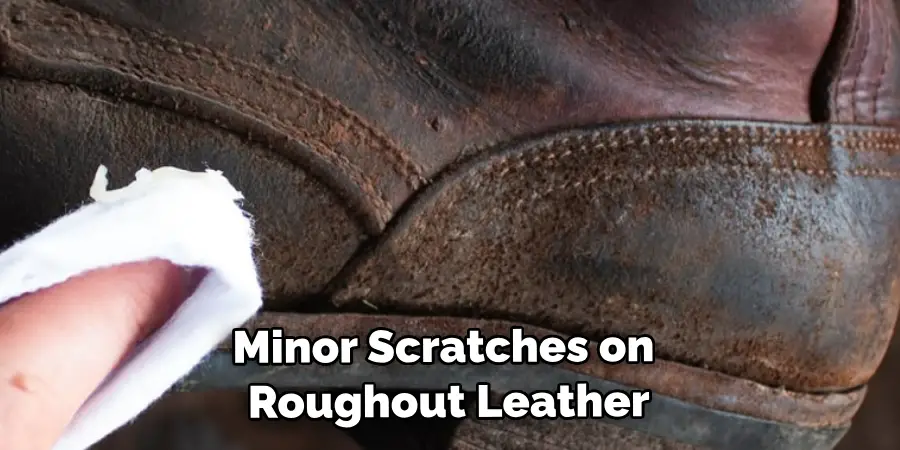
In addition to these specific products, there are also some general tips for caring for roughout leather. It is important to avoid exposing it to direct sunlight or extreme heat, as this can cause the leather to dry out and become brittle. If exposed to water, be sure to blot it with a clean cloth and allow it to air dry naturally.
Conclusion
In conclusion, roughout leather is a versatile and durable material that can be used for a variety of purposes. It offers a unique texture and appearance that adds character to any product it is used in. One of the key things to remember when working with roughout leather is proper conditioning. This not only helps maintain its appearance, but also extends its lifespan and prevents any damage or wear over time.
Next, choose a high-quality conditioner specifically made for roughout leather. Apply it in small amounts and use a circular motion to evenly distribute it on the surface of the leather. Be sure to cover the entire surface, including any creases or folds. I hope reading this post has helped you learn how to condition roughout leather. Make sure the safety precautions are carried out in the order listed.

